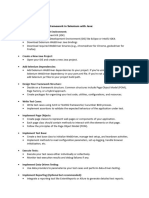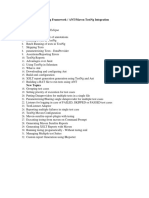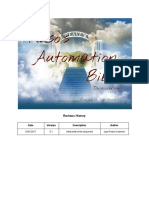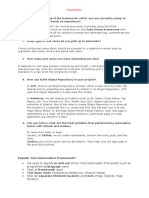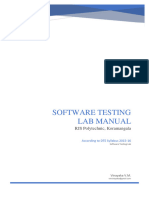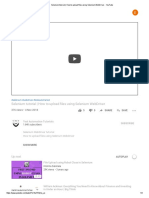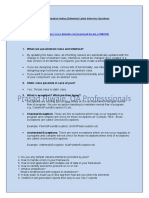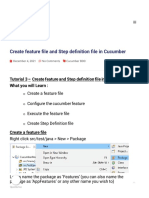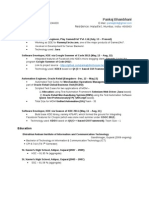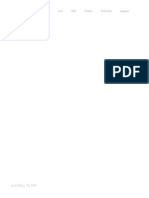0% found this document useful (0 votes)
11 views4 pagesWeb Application Test Automation - Project 1
The document outlines a project to create an end-to-end automation framework for testing a web application using Java, Selenium WebDriver, and TestNG. It includes deliverables such as source code, documentation, and a structured project outline detailing setup, testing modules, and framework design. The project aims to automate various test cases, generate reports, and utilize a modular Page Object Model for efficient testing.
Uploaded by
Hacker DepartmentCopyright
© © All Rights Reserved
We take content rights seriously. If you suspect this is your content, claim it here.
Available Formats
Download as DOCX, PDF, TXT or read online on Scribd
0% found this document useful (0 votes)
11 views4 pagesWeb Application Test Automation - Project 1
The document outlines a project to create an end-to-end automation framework for testing a web application using Java, Selenium WebDriver, and TestNG. It includes deliverables such as source code, documentation, and a structured project outline detailing setup, testing modules, and framework design. The project aims to automate various test cases, generate reports, and utilize a modular Page Object Model for efficient testing.
Uploaded by
Hacker DepartmentCopyright
© © All Rights Reserved
We take content rights seriously. If you suspect this is your content, claim it here.
Available Formats
Download as DOCX, PDF, TXT or read online on Scribd
/ 4



